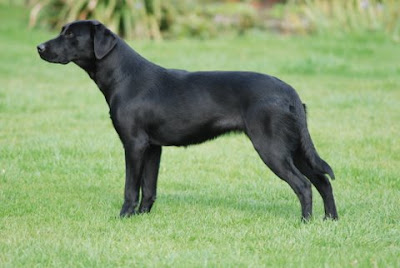 |
| Cesky Terrier: dying for some new blood? |
Kennel Club Chairman Ronnie Irving was criticised for saying this in
Pedigree Dogs Exposed, but it's how a lot of dog breeders feel. This week, Cesky Terrier breeder Sheila Atter says pretty much the same thing in her
Dog World column.
She writes:
Take for example the latest big idea – the Advisory Council that is headed by Professor Sheila Crispin. I have to confess that when it was first announced that the members of this council would include ‘ordinary’ people whose qualification was simply that they had practical experience as dog breeders I was most impressed. The many different qualifications that were asked for from people who were actually being sought to serve on the council were refreshing and gave us hope that here was indeed a body that would understand the viewpoint of breeders and exhibitors.
Instead, what do we have? The answer is, sadly, more of the same. The names are depressingly familiar, as are their areas of expertise. True there is the token dog breeder – I hope she is a strong and determined lady as I fear she will have great difficulty in getting her point of view across. She will have to battle against the academics, the RSPCA representatives and the scientists.
Ah yes, the scientists! That’s where the parallel universe comes in. I wonder if anyone has ever told them (not that they would believe it) that dog breeding is not an exact science. An honours degree in genetics does not make you a good dog-breeder.
Understanding and making use of COIs, EBVs, AVKs may help you to produce healthier puppies but all of these are just tools, and there is absolutely nothing that can take the place of years of experience, an in-depth knowledge of the bloodlines within a breed and the instinctive gut-feeling that a particular mating is ‘right’ that marks out the great breeder from the rest.
As it happens, I agree in principle. And I am pretty sure that every scientist on the new
Dog Advisory Council would, too. As Paul McGreevy, from the University of Sydney, once said to me: "Dog breeders are very good at what they do. The problem is that what they do is often not very good." He then went on to say that if you could channel all that skill and expertise into doing the
right thing, dog breeders would be an unassailable force.
Of course dog breeders are happy-enough to run to the scientists when they want a DNA for a problem that is plaguing their breed. So why this deep distrust?
There's a clue from Sheila a little later in the article:
Yes, genetic diversity is important. No-one knows that more than I do – my breed has none and it’s a constant battle for responsible breeders to maintain what diversity we do have.
Here, I think, lies the root of Sheila's fear about scientists. Deep-down, she knows they will tell her that her beloved Cesky Terriers are so inbred that the breed needs to consider an outcross. And athough the scientists are of course not there to
force an outcross on this and other very inbred breeds, the idea of mongrelising their beloved breeds by bringing in new blood makes many dog breeders recoil in horror.
But Cesky Terriers really are extremely inbred. A brother/sister mating, for instance would produce puppies with a co-efficient of inbreeding (COI) of 25 per cent. But many Cesky Terriers have COIs of 80 per cent and higher. This makes them virtual clones of each other.
Thanks to careful selection and a bit of luck, the Cesky is a breed that is not plagued with many obvious inherited disorders. But cancer is an issue (a condition that may be more prevalent in the breed because of inbreeding) and the Cesky has not escaped one of the other costs of inbreeding: reduced fertility and smaller litter sizes. Longevity too, is compromised. Although the sample size was extremely low, the
2004 KC/BSAVA health survey results for the Cesky found a median age of death of 8yrs 5months - the lowest of all the terrier breeds according to
Dr Kelly Cassidy's Dog Longevity website (the border terrier, in comparison, on average lives to 14).
A careful outcross programme has the potential to fix these issues. Usefully in this case, the breed's parent breeds (the Scottie and the Sealhyam) are still there to outcross to. Yes, these breeds have their own problems, but the alternative, surely, is even more scary?
I hope that the attitude towards outcrossing changes. Success stories like Bruce Cattanach's
Bobtail Boxer project and the
Dalmatian Backcross Project are trail-blazing and should inspire, rather than scare dog-breeders.
The scientists are there to help, not hinder. Really.













